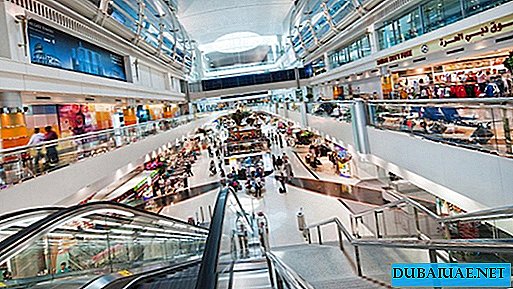
Tatyana Peschanskaya
doctor, candidate of medical sciences, passionate traveler and our regular author.
Canvas in azure tones.

The Cote d'Azur is located at the southern foot of the Maritime Alps. The ideal mountain range descends to the sea and the coastline stretches from the Italian border to the western edge of the Var department. The name of the region speaks for itself. It appeared with the light hand of the poet Stephen Liege and carries with it an amazing variety of features characteristic of this corner of France. Historical evidence from different eras is collected here, and the diversity of the nature of this region is amazing: majestic alpine landscapes with multicolored rocks in Esterel and spacious bays, weary of heat, rocky cliffs steeply descending to the sea in Eze, Manton and Monaco and countless valleys located in mountains beyond Nice.
The habitats of people and animals are extraordinary here: from large trading cities with their busy activities to small villages that managed to preserve the evidence of their once turbulent and eventful past; from the festive bustling market of Cours Saleiia to the expanses of Mekantur Natural Park. The climate beckons with its uniqueness: where else, having dipped your feet in the blue waters of the Mediterranean Sea, you can admire the snow-capped peaks of the Alps with their famous winter sports stations in Aron, Isola 2000 and Valberg. The vegetation of the region is lush and fragrant: flowers of mimosa, jasmine, rose, lavender exude subtle aromas, rare species of the most exotic plants are collected in the country's botanical gardens. Here palm trees gently wiggle leaves next to a pine tree grown on a cliff, proudly bearing its dark green crown. The severity of the mountains is adjacent to the tenderness of the gentle sea, the bustling city life with rural calm. And all this is illuminated by the gold of the generous sun, covered with the blue of the azure sky and seasoned with spices of local cuisine - caraway seeds, garlic, basil and olive oil. The wonderful alchemy of the Cote d'Azur!
Capital as capital
Our acquaintance with the Cote d'Azur began with its internationally recognized capital - the city of Nice. People have sought to settle here since prehistoric times. This is evidenced by archaeological finds in the Grimaldi grottoes. They confirm the presence of Paleolithic and Neolithic eras in these places. In the fourteenth century, when Avignon became the capital of the West, the whole of Provence was in the heyday of literature and art. But when Provence became finally French, Nice, tied tightly with the Dukes of Savoy, took a different path. Nice was annexed to France in 1793.
Since the mid-nineteenth century, the glory of Nice has been constantly growing, the city has become a center of tourism and trade. This happens, in particular, thanks to the wealthy British, for whom Nice, with its mild climate and beautiful nature, has become a favorite vacation spot. The twentieth century begins in Nice with the flourishing of luxury and recklessness, the so-called "Belle Epoque". Hotels bearing the famous names "Majestic" and "Negresco", "Rudder" and others grow directly from the earth. In 1917, after the October Revolution in Russia, a large number of emigrants flock to Nice in search of asylum. In the twentieth century, Nice turns into a metropolis and becomes the gateway to Europe on the Mediterranean Sea.
Promenade of the British and Cove of Angels
It's not so easy to talk and write about Nice. To appreciate this city, it must be perceived as a whole. Arriving here, we found behind its world-famous resort and tourist facade a frivolous charm, a true personality with a rich ethnic past. The inscriptions on numerous tablets revealed to us dates and events from the history of this county.
Each city block is distinguished by its originality and zealously preserves the originality of its appearance, architectural monuments and original traditions. The rich past of Nice: Greek, Roman, and, alternately, Savoy and French, is exciting. Nevertheless, one cannot get an idea of Nice without taking a walk along the English Promenade, which so often symbolizes the capital of the Cote d'Azur. The avenue is slowly unfolding along the beaches of the Bay of Angels. Glistening windows and splendor overlook the palace - witnesses of the city’s former luxury: the Negresco palace, built in 1912 in the style of Belle Epoque, Westminster, Royal ... The architectural ensemble is complemented by palm trees, piercing blue of the sky, constantly changing reflections of the sea - this is her dream, which is within reach.
Nice has a lot of interesting things: a rare panorama of the city, the Bay of Angels and its environs opens from the top of the Castle. In the east you can see Mount Boron and the port quarter, built during the reign of Karl Emmanuel III of Savoy. In the west, on the slopes of neighboring hills, is a new city. Below the Castle, between the Payon quarter and the Mediterranean coast, the old town lives in a leisurely life, the most ancient and picturesque area of Nice. Its narrow winding streets are lined with houses of various colors in ocher colors - from almost white to reddish brown. Streets lead up, go down the stairs, turn abruptly. Simple people live here and a local chanting tune is heard.
Nice's main street bears the name of its former mayor, Medsen. The Notre Dame Cathedral, built in the Gothic style and reminiscent of its architecture, Notre Dame Cathedral, installed in the French capital, faces the street. The street leads to Place Massena, with the attractive beauty and harmony of the architectural ensemble of ocher stone houses with a red tint. The scenery is beautiful fountains against the backdrop of lush vegetation. This square, as well as the boulevards of Albert I and the Promenade of the British form the center of the cultural life of the city, where the theater, the Museum of Art Nouveau and Contemporary Art, Acropolis are located.
As a center of cultural life, the city has numerous museums. The National Museum of the Bible Message of Marc Chagall is located on Simiez Hill. It was built in 1972 by the architect A-Erman, who carried out the will of the artist: Marc Chagall wanted all his paintings on the biblical theme to be collected in one place. In one of the palaces standing on the Promenade of the British, is the Massena Museum with an interesting collection of ancient paintings.
Russian pages in the history of Nice
There are many churches in Nice. Among them stands out for its beauty the church of Jesus, the chapel of the Annunciation (Saint-Guillaume), the chapel of Mother of Mercy. However, a real architectural masterpiece is the Russian Orthodox Church. It was built in 1903-1912. designed by the architect Preobrazhensky and resembles the Moscow St. Basil's Cathedral (Pokrovsky Cathedral).
Difficult

o to find outside Russia such a perfect example of Russian temple art and such a beautiful Orthodox church as St. Nicholas Cathedral in Nice. Thousands of pilgrims from different countries visit it annually, attending the divine services taking place in it. Whatever culture and religion the visitor considers himself to be, no matter what artistic views he adheres to, this church unanimously admires the beauty of the interior, its prayer atmosphere and the splendor of Orthodox services.
The construction of the Russian Orthodox Church in Nice is connected with the name of Empress Maria Fyodorovna. In 1896, the widow of Alexander III, Empress Maria Fedorovna, arrived on the Cote d'Azur to spend the winter. At that time, her sister, the Princess of Wales, was here with her mother-in-law, Queen Victoria of England. The Dowager Empress Maria Fyodorovna arrived with her sons George and Michael, and the youngest daughter, the great Princess Olga. Grand Duke George, who was 25 years old, was seriously ill with tuberculosis, and his mother hoped that the mild climate would have a beneficial effect on his health. Archpriest Sergiy Lyubimov was the head priest of the Russian Orthodox church in Nice at that time. The Russian colony in Nice by that time was becoming more numerous. Many Russians bought estates here and began to live in Nice all year round. The church on Lonshan Street no longer accommodated all parishioners. Orthodox Russian people were concerned about this situation. Sergius Lyubimov, being the confessor of the Dowager Empress, told her about the spiritual needs of the Russian colony in Nice and about his desire to build a new church. Empress Maria Fedorovna immediately supported this idea. It was in Nice that her fiancé, heir to the Russian throne, Tsarevich Nikolai Alexandrovich, died thirty years ago, and her fate was determined in Nice there: she was to become the wife of Emperor Alexander III.
Returning to St. Petersburg, she enlisted the support of her son, Emperor Nicholas II, and in 1900 agreed to become the trustee of the "Construction Committee of the New Russian Orthodox Church in Nice." The development of the project was entrusted to the Preobrazhensky professor of architecture at the Imperial Academy of Arts of St. Petersburg. One can only admire the power of talent, the perfection of taste, the variety of knowledge and skills of the author. In full accordance with the wishes of his august patroness, and probably also influenced by tendencies to return to national sources, which reigned both in architecture and in all other forms of art, Professor Preobrazhensky created an unusually talented cathedral project in the style of Moscow and Yaroslavl churches pre-Petrine era.
Emperor Nicholas II gave his highest permission for the new church to be built in Bermon’s own park, located in one of the most beautiful neighborhoods in the city of Nice. It was here, in one of the mansions of Villa Bermon, in 1865, the young heir to the Russian throne, Tsarevich Nikolai Aleksandrovich, died. One of the wide streets leading to this large and beautiful park was named in memory of the deceased heir - Tsarevich Boulevard.
The interior of the church in the shape of the Greek cross is extraordinarily luxurious: fine work of wood carving, silver jewelry and rich painting confirms the deep spirituality of the icons. The only nave of the church is decorated with icons of great artistic value. The wall painting was made by Designore based on drawings by Pianovsky. On the frescoes are images of the Virgin, the Archangel Michael, the Divine face of the Savior (a copy of the icon of the Assumption Cathedral in Moscow), the Kazan Mother of God, Our Lady of Vladimir.
The icon of St. Nicholas the Wonderworker, especially revered by the parishioners, is in a handmade carved walnut icon case. She belonged to the Crown Prince Nikolai Alexandrovich, the eldest son of Emperor Alexander II, and at his death in Nice was at his deathbed. The consecration of St. Nicholas Cathedral took place on December 17, 1912. The Holy Synod of the Russian Orthodox Church awarded the new church, built in Nice, the title of parish council, which was the first time for the Russian church outside of Russia. Even the Russian church on Daroux Street in Paris did not carry this title.
So this magnificent house of the Lord arose, a place of prayers for the salvation of the soul and for the organization of life according to the commandments of God. A few years after the consecration of the cathedral, events took place that no one could have foreseen: the First World War and several revolutions in Russia that brought so much blood and tears. Only in this magnificent, newest, most beautiful and majestic temple, being in exile, far from the Fatherland, on a foreign land, did people find a wonderful memory of the former greatness of their temporarily humiliated and insulted Motherland and the opportunity to pray to God, as before, in the Russian church where everything is so close and clear. Today, the Cathedral in Nice is a monument of unsurpassed beauty and amazing luxury, visited by thousands of people from different countries and different religions.
The palette of artists, the muse of poets ...

Nice is considered one of the most cultured cities in the world. Nice's light and colors inspired many world famous artists. Among the artists are Delacroix, Monet, Renoir, Picasso, Matisse, Marc, Chagall ... Among the writers are Balzac, Flaubert, Maupassant, Merimet, Dumas, Baudelaire, Tolstoy, Meterlink ... Many people of art not only stayed in Nice, but also stayed in her forever. The mere fact of the presence of such celebrities in the city gave impetus to the creation of many museums and galleries, and secured the glory of the center of culture and art for Nice. However, not only artists and poets like Nice. She was appreciated by many politicians, scientists, financiers, aristocrats who come here from all over the world. Nice is not only a kind hostess meeting celebrities, she has become the cradle of famous talents. These are artists Van Loo and Brea, astronomers Cassini, Maraldi and Laskari, historian Joffredo, Abbot Saint-Pen, naturalists Baria and Risso, generals Massena, Ruska and Garibaldi.
 Nice is also known worldwide for its carnival, which goes back to the distant past, in the 13th century, when the church, worried about its priests, forbade them to wear fancy dresses and dance during the festivities preceding fasting. Until the 19th century, the carnival was quite anarchic, then the creation of the festival committee in 1873 revived this ancient and beautiful tradition. During the carnival, various festive events are organized: ceremonial trips of Her Majesty the Queen of the Carnival, flower contests contesting the primacy for the best aroma or color scheme. For several days, Nice is the kingdom of motorcades decorated with flowers of carts, carnival chariots, confetti, flower battles, fireworks and music. Each year, the carnival ends with the burning of His Majesty Carnival from papier-mâché on the promenade of the United States after a magnificent carnival procession. Having enjoyed the luxury of the palaces, nature warmed by the sun, a real oasis of happiness, we continued the journey. Our route stretched beyond the hills of the Cote d'Azur along a beautiful road, surrounded by olive groves, to the city of Grass, which is considered to be the perfumery capital of the world. And that means to be continued ...
Nice is also known worldwide for its carnival, which goes back to the distant past, in the 13th century, when the church, worried about its priests, forbade them to wear fancy dresses and dance during the festivities preceding fasting. Until the 19th century, the carnival was quite anarchic, then the creation of the festival committee in 1873 revived this ancient and beautiful tradition. During the carnival, various festive events are organized: ceremonial trips of Her Majesty the Queen of the Carnival, flower contests contesting the primacy for the best aroma or color scheme. For several days, Nice is the kingdom of motorcades decorated with flowers of carts, carnival chariots, confetti, flower battles, fireworks and music. Each year, the carnival ends with the burning of His Majesty Carnival from papier-mâché on the promenade of the United States after a magnificent carnival procession. Having enjoyed the luxury of the palaces, nature warmed by the sun, a real oasis of happiness, we continued the journey. Our route stretched beyond the hills of the Cote d'Azur along a beautiful road, surrounded by olive groves, to the city of Grass, which is considered to be the perfumery capital of the world. And that means to be continued ...











